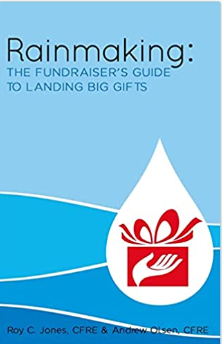“A donor segment is a group of donors or prospects who require similar fundraising communications according to the information that categorizes them… Our charity uses segmentation for reporting results.”
I recently asked a fundraising professional if his charity used donor segmentation to raise money. He responded that his charity used segmentation to simply report results. There is a HUGE difference between using segmentation to report results versus using it to produce results.
Grouping donors by channel they were acquired and subdividing them by recency (date), frequency (number of gifts) and monetary amount (gift amounts) is important for reporting. However, just looking at results without creating unique tactics by segment is a huge mistakes. Thousands of charities struggle financially because they do not segment their file and then deploy executable tactics to impact giving by each individual segment.
Don’t get me wrong, organizing your data base by RFM segment is important, but if you are not implementing tactics to move donors from one segment to the next best performing segment, you are making a big mistake. Here are a few examples for you to consider to begin properly using RFM to raise funds, not just report funds:
A UNIQUE ASK AMOUNT FOR EVERY DONOR ON YOUR FILE. Technology today enables fundraiser to create a unique ask amount for every donor on your file. If you are still sending static ask amounts like $25, $50 and $100 to a $100 donor you will be downgrading donors and may even be forcing larger donors to lapse. Most charities will use a regular donors last give amount to calculate the initial ask amount and then built a multiple for suggested ask amounts. This “gift array” might be calculated by last gift x 1; last gift x 1.5; last gift x 2. Most donors will gravitate towards the middle ask, which means they are organically upgrading their giving by 50% every time they give.
AN OPEN ASK FOR MAJOR DONORS. Using “gift array” ask amounts can seem to mechanical for gifts over $10,000. Many nonprofits test into an open ask for their big givers. So your donor gives a large gift twice a year, but how much should you ask for this time around? Ask for too little and you won’t get as much as you could. Ask for too much and you might offend the donor.
WHYFU. Is this a segment title you recognize? Why Have You Forgotten Us? It is designed to identify those donors that have lapsed or are approaching your lapsed benchmark. Some non-profits create special copy, email and call touch-points for donors who have given in 13 months… others push it out to 18 months. Remember, this segment is more unique than others. You are not trying to get them to climb a rung on the ladder (upgrade); you are trying to keep them from falling off of the ladder (lapsing). The gift array strategy should be very different. Many charities will downgrade giving ask amounts in order to lift the response rate. Others will include a two or three question survey. Some charities even offer a free gift if they will send a gift of any amount. Remember, the goal is to get them to give again.
LBUNT/SYBUNT. Are you scratching your head wondering what this means? Last Year But Unfortunately Not This Year or Second Year But Not This Year. Are you creating a segment for those donors that is designed to Win Them Back? Nothing is more critical to your organization than winning back lapsed donors to the active donor file. As a matter of fact, most charities report that the long term donor value of a “win back” is twice as valuable to your organization than a new donor. Win Back Donors give more! It is almost like they want to make up for the lost time they strayed away. Using surveys and other involvement devices are very important to getting these donors to give again. The amazing fact is that most lapsed donors don’t even realize that they have lapsed. They are multi-donors to several charities and you just got overlooked. Cut through the clutter. Remind them that you miss hearing from them in the copy platform PS. Don’t be afraid in your Tax Receipt mailing or a regular appeal reply device to list their last gift date. Just add a line that says you are reviewing the database and ask them to confirm: “Our records indicate that the last gift you made is Oct 15, 2020.” You’ be surprised how many are quick to tell you they are not upset, they just forgot.
SUSTAINER TRIGGER FOR MONTHLY GIFTS. Getting donors to sign up for monthly giving program is not easy, but it can be done with a monthly select. Every month run a report of donors who have given 3 gifts in the last 90 days and then send them a special appeal that thanks them and outlines the benefits of being a monthly sustainer: less mail, lower gift amounts, automatic gift, saving the charity money. CAUTION: you need to create a growing suppression file. If the donor has received the “sign up” appeal, they should be suppressed from these special requests for 12 months. Creating a monthly suppression file is very important. Many charities will add an email and a phone call to chase the “3 gifts in 90 days” trigger. If your average donor gives 3 times a year after you mail them 18 time; imagine the impact on donor value when you get 12 gifts a year and only have to mail them 3 times (or so) a year. I recommend mailing your sustainers at year end, a February tax receipt and a Summer Slump package in late May each year.


